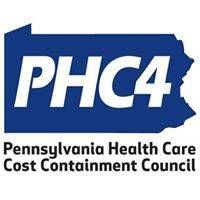Click here to subscribe today or Login.
They are the tragic victims of drug abuse not of their making: infants born with the addiction of their parents. It’s called Neonatal Abstinence Syndrome, and the numbers have ballooned like a mushroom cloud: Hospital admissions statewide for NAS have increased 1,096 percent since 2001, according to a new report.
An array of problems “develops shortly after birth in newborns who were exposed to addictive drugs, most often opioids, while in the mother’s womb,” a research brief by the Pennsylvania Health Care Cost Containment Council notes. “Withdrawal signs develop because these newborns are no longer exposed to the drug for which they have become physically dependent.”
The problem is worse locally than it is statewide. The brief looks at the number of infants treated for NAS per 1,000 newborn admissions. Across Pennsylvania, in 2017 the rate was 15 per 1,000 admissions. Among Luzerne County and seven neighboring counties only two reported a lower rate: Columbia at 12.4 per 1,000 and Schuylkill at 13.6 per 1,000.
As is typically done in council reports, data was not reported for counties with low volumes of infant admissions. This report omitted data for six counties, including Sullivan.
Luzerne County’s rate was 16.7 per 1,000, while Wyoming County was 16.5. Lackawanna County had the highest regional rate at 27.2 per 1,000.
The brief does not give detailed data for each county, but the statewide numbers paint a bleak picture:
• In 2001-02, the state rate for newborns admitted with NAS was 1.2 per 1,000 admissions; in 2016-17, it was 15.
• The problem is costly. In the 2017 fiscal year, NAS-related newborn stays added an estimated $14.1 million in hospital payments.
• The problem extends newborn hospital stays roughly five-fold. In 2017, the average hospital stay for newborns with NAS was 17.1 days; for all other newborn stays, it was 3.5 days.
•The problem is multi-faceted. Complications were much more frequent among those with NAS. Low weight occurred in 15.7 percent of NAS newborns compared to 6.6 percent among all newborns; premature birth occurred in 14.8 percent with NAS compared to 8.1 percent overall; feeding difficulty occurred in 14.9 percent with NAS compared to 3.5 percent overall; and respiratory distress developed in nearly one quarter (24 percent) of NAS newborns compared to less then one-tenth (9.3 percent) overall.
While 86.9 percent of NAS-related hospital stays were expected to be covered by Medicaid, traditionally used by low-income patients, the problem is not reserved for the poor. On the contrary, the council estimates that only 16.7 percent of NAS newborn cases occur among families making less than $40,000. The highest rate, 19.2 percent, is among those earning $40,000 to $49,999.
From there, the rate declines for every $10,000 increase in income range: 16.4 percent for $50,000 to $59,999, 12.3 percent for $60,000 to $69,999 and 11.8 percent for $70,000 to $79,999. But even the top bracket in the report — $80,000 and up in household income — is still estimated to have 6.8 NAS cases for every 1,000 newborns admitted to a hospital.
Nor is newborn drug addiction primarily a problem among minorities. On the contrary, the data shows that NAS-related hospital stays are highest among white infants, at 19.2 cases per 1,000 newborn stays. For blacks, it is 7.2 per 1,000.






